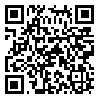







































BibTeX | RIS | EndNote | Medlars | ProCite | Reference Manager | RefWorks
Send citation to:
URL: http://journal.iehfs.ir/article-1-221-en.html
Introduction: Work-related musculoskeletal disorders (WMSDs) are among the major causes of work-related disability in healthcare workers (HCW). One of the main causes of WDSDs is patient handling. This study aimed to identify hazardous conditions related to patient handling in hospital environments.
Material and Methods: Patient handling activities were evaluated in 23 wards of three hospitals in Shiraz, Iran. A researcher-made questionnaire was used to collect the required data through interviews with at least 23 HCW. Number of patient transfers per shift, patients’ ability to move to/from bed/stretcher, type and rate of personnel injuries, and necessity of transfer assist devices were surveyed.
Results: Over five manual patient transfers per shift were performed in 70% of the wards. More than 70% of the patients were completely or relatively unable to cooperate in their own transfer. In more than 80% of the wards, the staff involved in patient handling activities suffered from various WMSDs, mainly low back pain (48.78%). Almost all (95%) participants believed that transfer assist devices were necessary and helpful and could be beneficial to not only the patients, but also the HCW and the hospital.
Conclusion: Patients in most hospital wards need help when moving to/from bed/stretcher. Patient handling is generally performed manually by HCW. The high prevalence rate of WMSDs in the participating HCW highlighted the necessity of an ergonomic intervention, e.g. the use of transfer assist devices, for patient handling.
Received: 2015/07/20 | Accepted: 2016/02/22 | ePublished: 2016/02/22
| Rights and permissions | |
 |
This work is licensed under a Creative Commons Attribution-NonCommercial 4.0 International License. |






